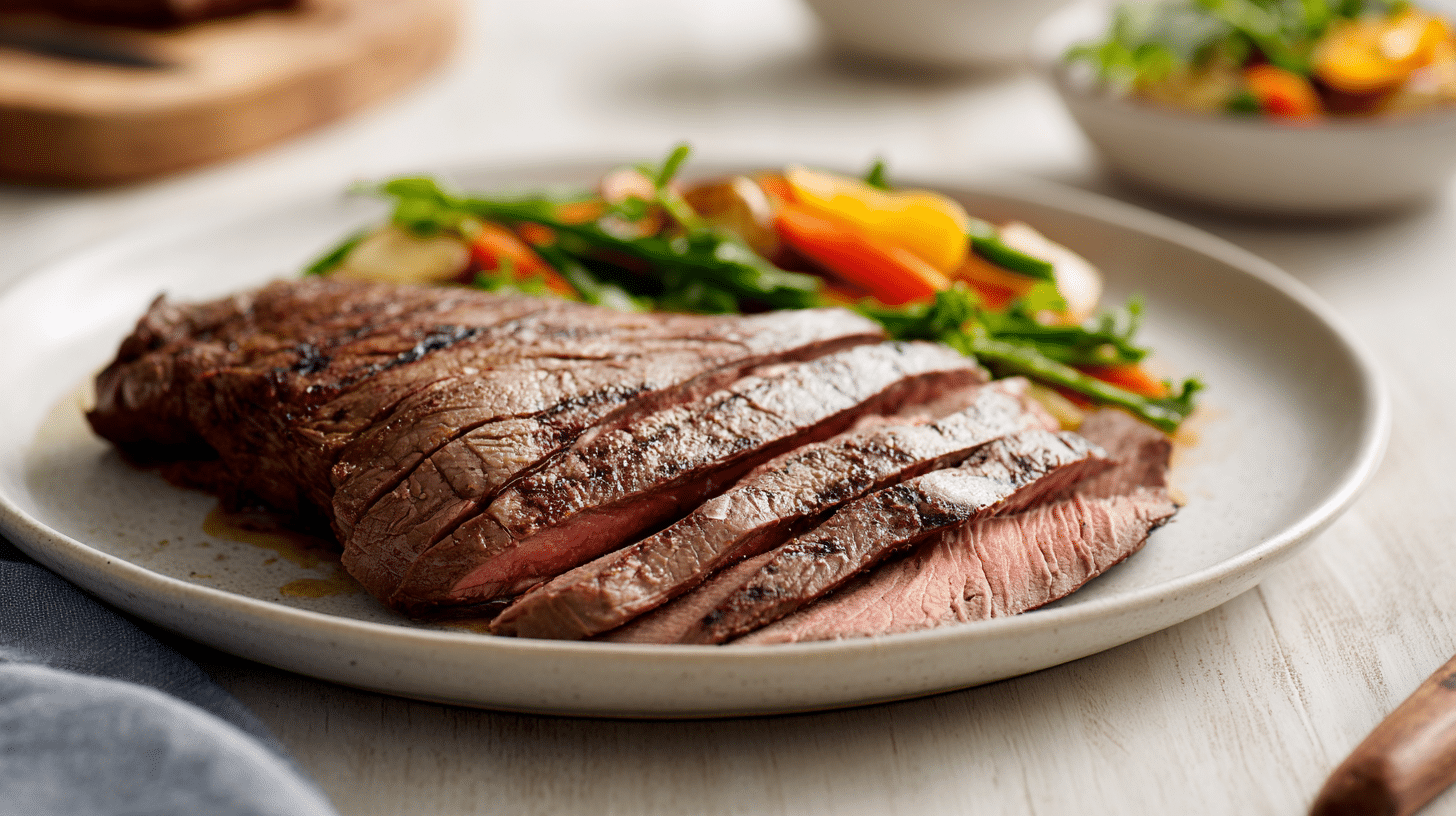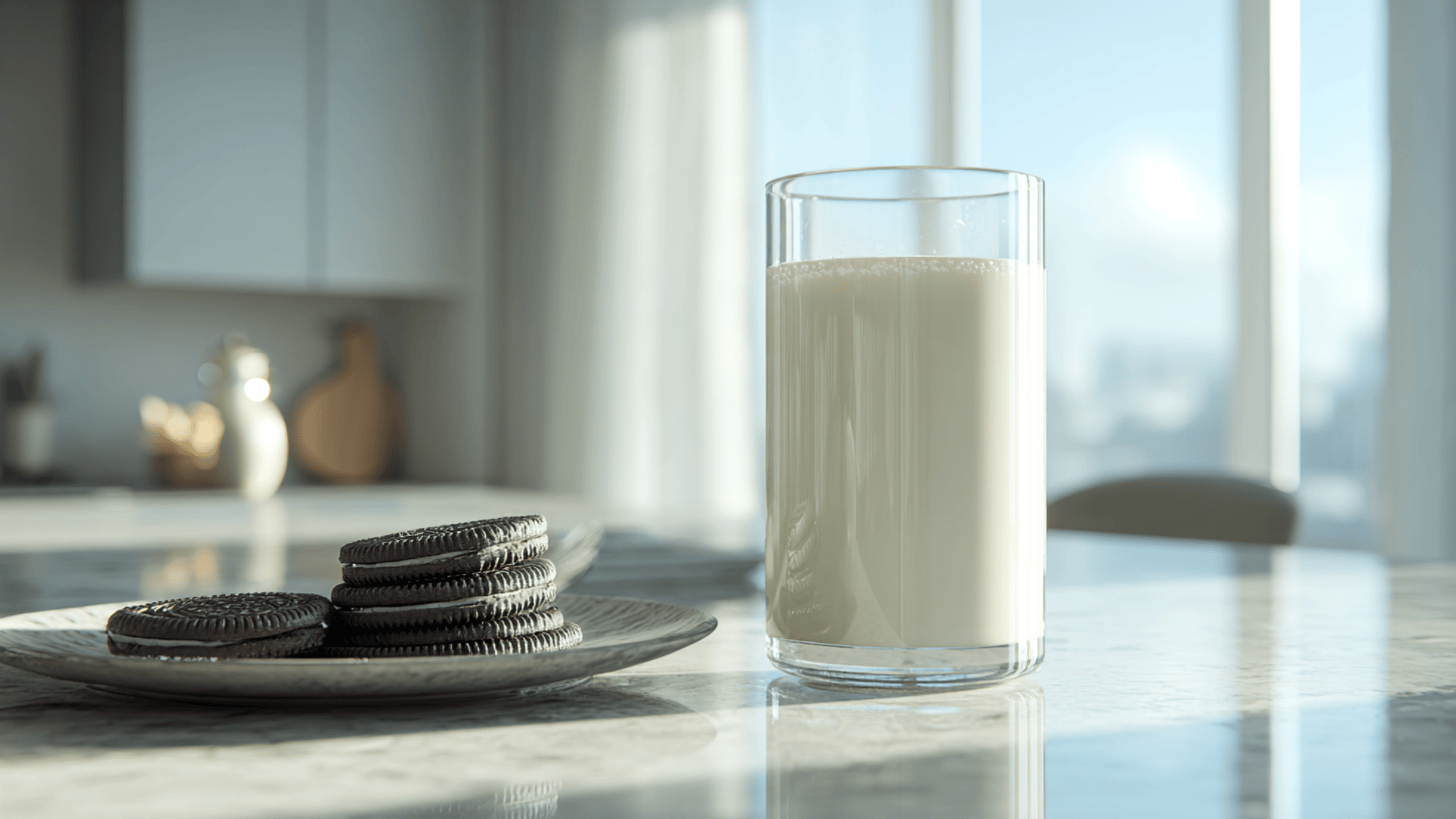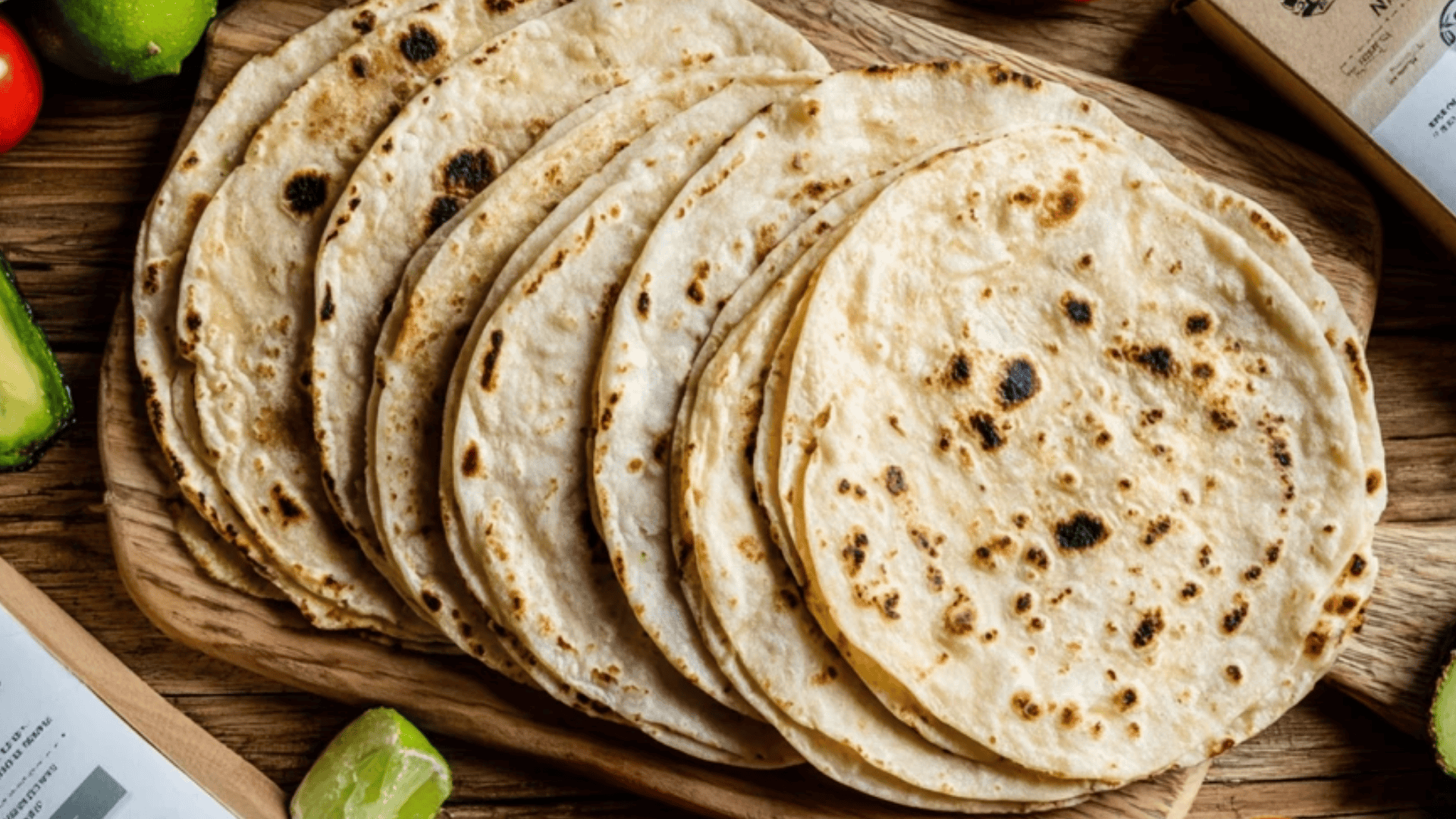Raw milk has become a hot topic lately. Some people swear by it, while health experts warn against it. But what exactly is raw milk, and what’s all the fuss about?
Raw milk is milk from an animal that has not been heated or processed.
It hasn’t undergone pasteurization, the heating process that kills harmful bacteria in regular store-bought milk.
We’ll break down the calories, proteins, fats, vitamins, and minerals it contains. You’ll also find the different types of raw milk from various animals and what health experts say about its safety.
What Is Raw Milk, Exactly?
Raw milk is milk that hasn’t been pasteurized or homogenized.
Pasteurization is a process invented by scientist Louis Pasteur in the 1800s. It involves heating milk to kill dangerous bacteria that might be lurking inside.
Homogenization is a different process that breaks up fat molecules so the cream doesn’t separate and float to the top.
When you buy milk at the grocery store, it’s been through both of these processes. Raw milk hasn’t. It’s basically milk, the way it came from the animal.
You can get raw milk from several animals. Cow’s milk is the most common type. But people also drink raw milk from goats, sheep, buffalo, and even camels in some parts of the world.
Raw Milk Nutritional Breakdown
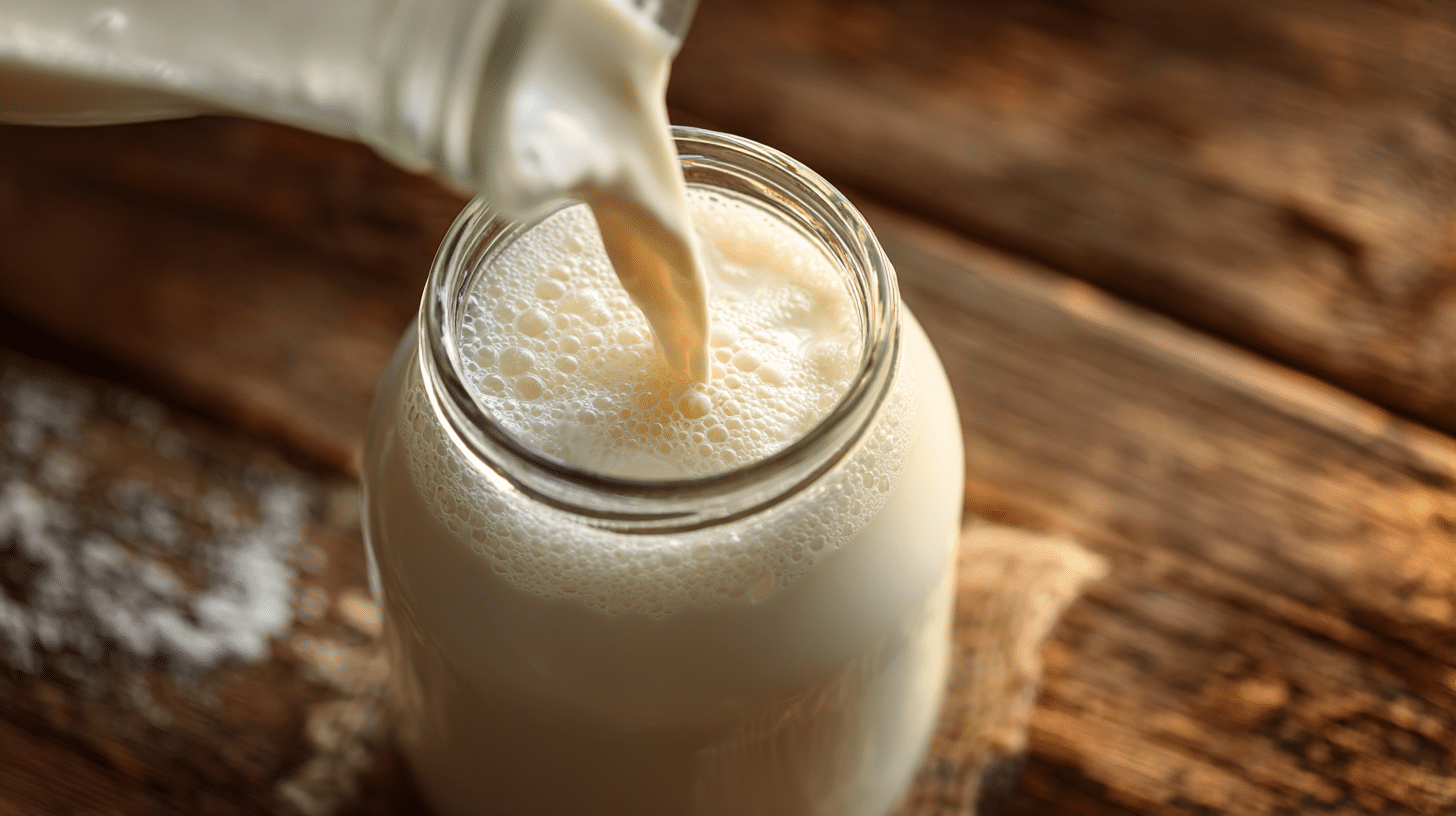
Now let’s dig into the nutrition facts. Remember, these numbers can vary depending on the animal, what it eats, and even the time of year. We’ll use one cup (240 mL) as our standard serving size.
1. Macronutrients in Raw Milk
- Calories: A cup of whole raw cow’s milk contains about 150-160 calories. That’s similar to pasteurized whole milk.
- Protein: Raw milk packs about 8 grams of protein per cup. These proteins include casein and whey, which are the same proteins found in regular milk.
- Fat: Whole raw milk has around 8-9 grams of total fat per cup, including about 5 grams of saturated fat. The fat content depends on the type of animal and whether the milk is whole or skim.
- Carbohydrates: You’ll find about 12 grams of carbs per cup, mostly from lactose. Lactose is a milk sugar, and it gives you energy.
2. Vitamins in Raw Milk
- Fat-soluble vitamins like A, D, E, and K are found in the milk fat. If the cows eat grass (rather than just grain), the milk tends to have more of these vitamins.
- Water-soluble vitamins include B vitamins like B2 (riboflavin), B12, B5, and B6. These help your body turn food into energy and keep your nervous system healthy.
One important fact: pasteurization has very little effect on most vitamins. So pasteurized milk gives you nearly the same vitamins as raw milk, but with much less risk of getting sick.
3. Minerals and Electrolytes
Calcium is probably the most famous mineral in milk. One cup provides about 300 milligrams of calcium, which is roughly 30% of what you need daily. Calcium builds strong bones and teeth.
Phosphorus and magnesium also support bone health and help with hundreds of chemical reactions in your body.
Other minerals include potassium (which helps control blood pressure), iodine (important for your thyroid), and zinc (which supports your immune system).
The amount of minerals can change based on what the animal eats and the season. Cows that eat fresh grass might produce milk with slightly different mineral levels than cows that eat dried hay.
4. Enzymes, Probiotics, and “Living” Components
This is where raw milk fans get excited. Raw milk contains natural enzymes and bacteria that pasteurization destroys.
Supporters of raw milk believe these enzymes help you digest the milk better. They also claim the bacteria act like probiotics, the “good” bacteria that support gut health.
However, current scientific evidence doesn’t strongly support these claims.
While raw milk does contain these components, researchers haven’t proven that they offer real health benefits compared to pasteurized milk.
Plus, not all bacteria in raw milk are the friendly kind. Some can make you very sick.
Is Raw Milk Safe?
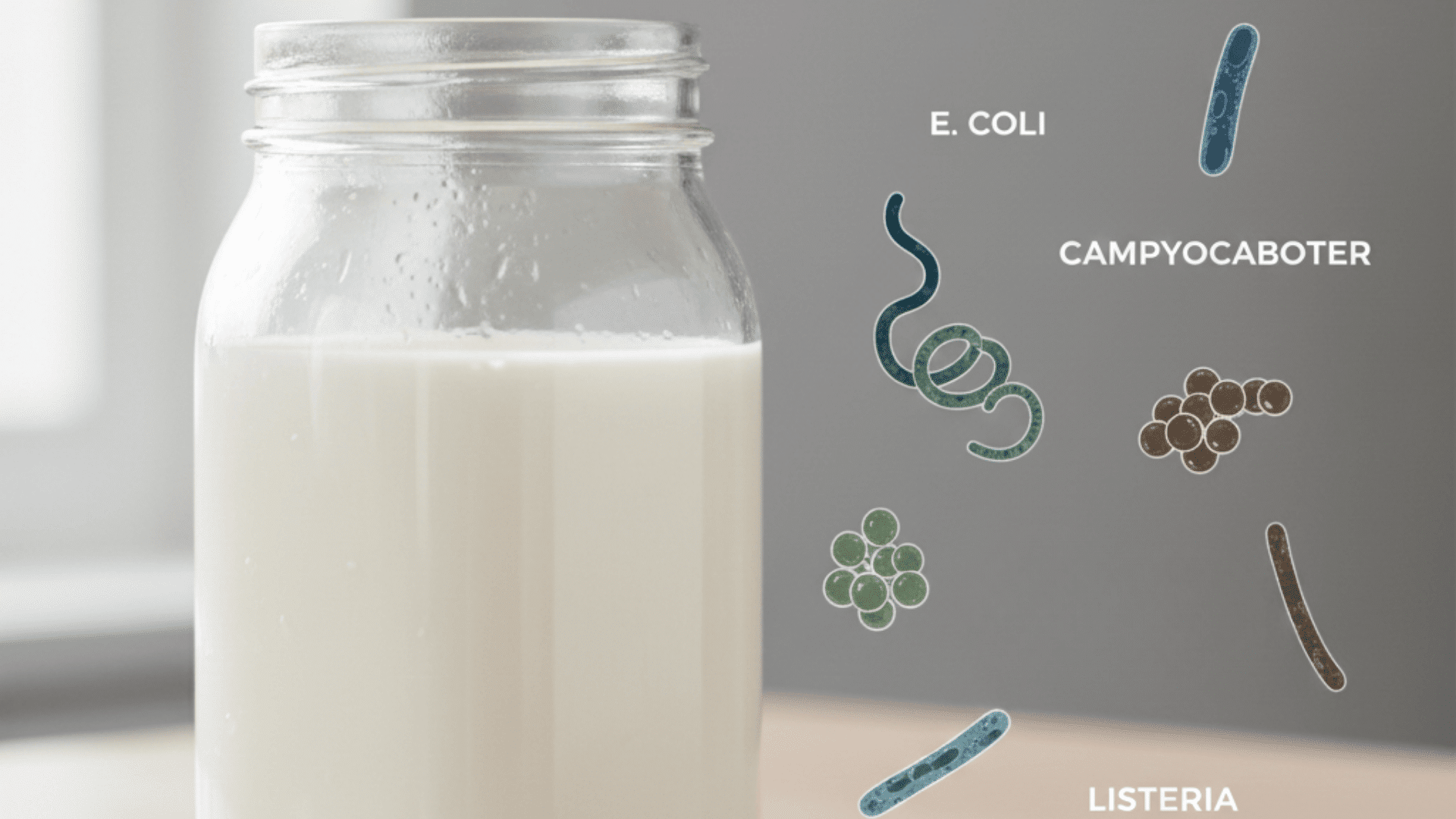
This is the big question, and it’s where health experts get concerned.
Raw milk can contain dangerous bacteria like E. coli, Salmonella, Listeria, and Campylobacter. These germs can cause serious illness.
Recently, there have even been concerns about avian influenza (bird flu) in raw milk from infected cows. These pathogens can be present even when the milk looks, smells, and tastes perfectly fine.
Pasteurization kills these bacteria. That’s why it was invented in the first place: to make milk safe to drink.
Who Is Most at Risk? Children, pregnant women, older adults, and anyone with a weakened immune system are at the highest risk.
Raw Milk Myths vs Facts
Let’s clear up some common misunderstandings about raw milk.
| Myth | Fact |
|---|---|
| “Raw milk is much more nutritious than pasteurized milk.” | Pasteurization only slightly affects enzymes and flavor. Core nutrients: protein, fat, minerals, and most vitamins, remain nearly the same. |
| “Raw milk prevents allergies and lactose intolerance.” | Scientific evidence is weak and inconsistent. Raw milk still contains lactose and the same allergenic proteins, so it won’t help lactose intolerance or milk allergies. |
| “If the farm is clean, raw milk is safe.” | Harmful bacteria can be present without any change in smell or appearance, making raw milk unsafe even under clean conditions. |
| “Raw milk–related illness is rare.” | When compared per serving, raw milk causes significantly more foodborne illness outbreaks than pasteurized milk. |
Types of Raw Milk (With Nutrition Tables)
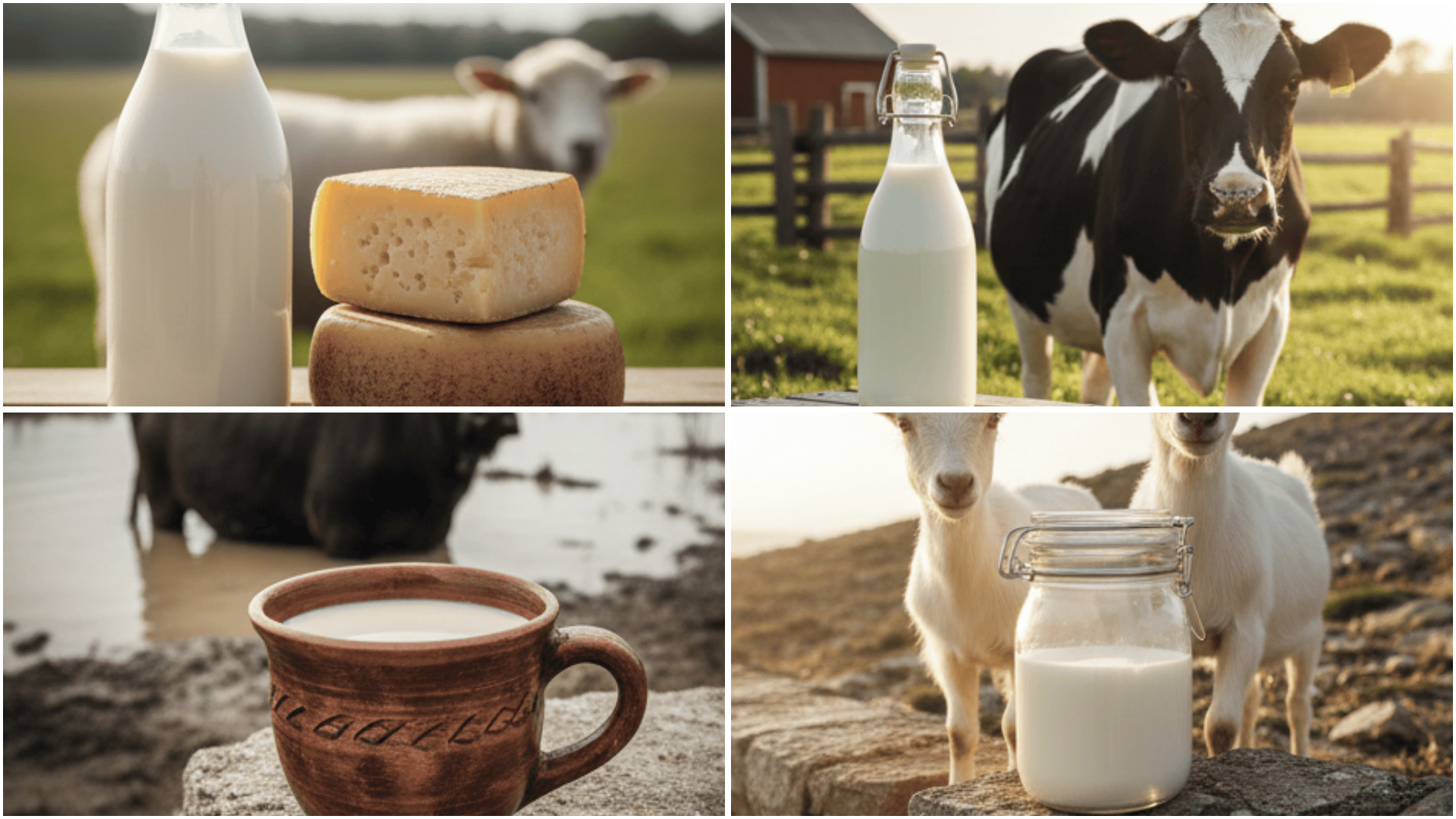
Different animals produce milk with different nutritional profiles.
The core nutrients are similar across all types, but the amounts of fat, protein, and minerals vary depending on the animal. All the tables below show nutrition per one cup (240 mL) serving.
1. Cow’s Raw Milk
Cow’s milk is the most popular type in the United States and many other countries. It has a mild, slightly sweet taste that most people are familiar with.
| Nutrient | Amount |
|---|---|
| Calories | 150 |
| Protein | 8g |
| Fat | 8g |
| Carbohydrates | 12g |
| Calcium | 276mg |
| Vitamin A | 249 IU |
| Vitamin B12 | 1.1 mcg |
| Vitamin D | 124 IU |
Cow’s milk provides a well-balanced mix of nutrients. It’s particularly rich in calcium and vitamin D, which work together to build strong bones.
2. Goat’s Raw Milk
Goat’s milk has a slightly tangy flavor. Some people find it easier to digest than cow’s milk, though scientific evidence on this is mixed.
| Nutrient | Amount |
|---|---|
| Calories | 168 |
| Protein | 9g |
| Fat | 10g |
| Carbohydrates | 11g |
| Calcium | 327mg |
| Vitamin A | 483 IU |
| Vitamin B12 | 0.2 mcg |
| Vitamin D | 29 IU |
Notice that goat’s milk has more calcium than cow’s milk and significantly more vitamin A. It also has slightly more protein and fat, which makes it creamier. However, it has less vitamin B12 and vitamin D.
3. Sheep’s Raw Milk
Sheep’s milk is less common but highly valued, especially for making cheese. It’s much richer and creamier than cow’s or goat’s milk.
| Nutrient | Amount |
|---|---|
| Calories | 265 |
| Protein | 15g |
| Fat | 17g |
| Carbohydrates | 13g |
| Calcium | 474mg |
| Vitamin A | 147 IU |
| Vitamin B12 | 1.7 mcg |
| Vitamin D | 32 IU |
Sheep’s milk is the nutritional powerhouse here. It has nearly double the protein of cow’s milk and more than twice the fat. It also provides significantly more calcium. Because it’s so rich, sheep’s milk is often used to make premium cheeses like Roquefort and Pecorino.
4. Buffalo Raw Milk
Buffalo milk (usually from water buffalo) is popular in South Asia. It’s used to make mozzarella cheese and many traditional Indian dairy products.
| Nutrient | Amount |
|---|---|
| Calories | 237 |
| Protein | 9g |
| Fat | 17g |
| Carbohydrates | 13g |
| Calcium | 412mg |
| Vitamin A | 178 IU |
| Vitamin B12 | 0.9 mcg |
| Vitamin D | 0 IU |
Buffalo milk is extremely creamy due to its high fat content. It has more calcium than cow’s milk but less protein than sheep’s milk. The thick, rich texture makes it perfect for yogurt and cream-based dishes.
5. Camel Raw Milk
Camel milk is less common but gaining interest. It’s traditional in the desert regions of the Middle East and Africa.
| Nutrient | Amount |
|---|---|
| Calories | 107 |
| Protein | 5g |
| Fat | 4.6g |
| Carbohydrates | 11g |
| Calcium | 264mg |
| Vitamin A | 58 IU |
| Vitamin B12 | 0.6 mcg |
| Vitamin D | 0 IU |
Camel milk is much lower in fat and calories than other types. It has a different fat profile with more unsaturated fats. Some people who can’t tolerate cow’s milk find camel milk easier to digest, though more research is needed.
Raw Milk Health Benefits vs Potential Drawbacks
Major health organizations like the CDC, FDA, and American Academy of Pediatrics all say the risks of raw milk outweigh the potential benefits for most people.
| Claimed Benefits | Documented Risks |
|---|---|
| Natural, unprocessed product | Contains potentially deadly bacteria |
| Richer taste and texture | Causes more outbreaks than pasteurized milk |
| May contain natural enzymes | Enzymes don’t survive stomach acid anyway |
| Contains bacteria (viewed as probiotics) | Contains harmful bacteria that cause illness |
| Perceived easier digestion | No strong evidence of digestive benefits |
| Slightly higher enzyme levels | Same basic nutrients as pasteurized milk |
| Traditional, “farm-fresh” appeal | Pasteurization was invented to save lives |
| Minimal nutrient loss claimed | Actual nutrient loss from pasteurization is minimal |
If you’re still considering raw milk, have an honest conversation with your doctor. Make sure you understand both the nutrition facts and the safety concerns before making your choice.
Conclusion
So what have we learned about raw milk nutrition facts?
Raw milk contains valuable nutrients, including protein, healthy fats, vitamins, and minerals. In terms of basic nutrition, it’s quite similar to pasteurized milk.
However, the main difference between raw and pasteurized milk isn’t about the nutrients. It’s about safety. Pasteurization kills dangerous bacteria that can cause serious illness.
If you’re considering raw milk, it’s important to understand both sides of the story. Talk to your doctor, especially if you’re pregnant, have young children, or have health conditions that weaken your immune system.
At the end of the day, you can get excellent nutrition from pasteurized milk without the added risks. Your health and safety matter most.



